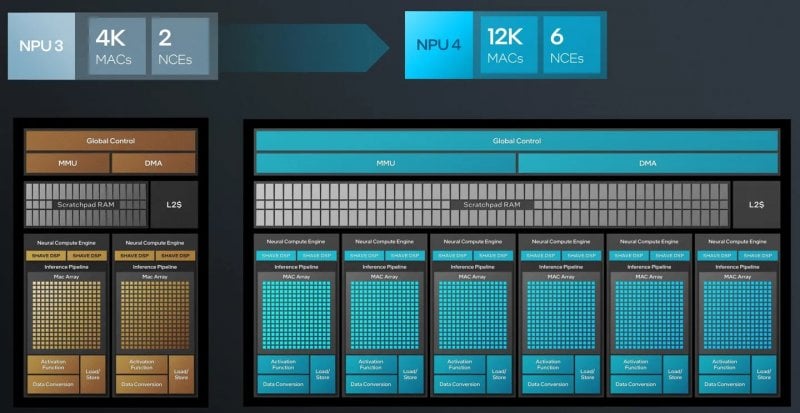There is certainly one of the protagonists of Computex 2024 Lunar Lake, the new Intel SoC which will appear on the market in the third quarter of the year. After the many rumors that have swirled in recent months, Intel has finally offered a fairly complete first look at the features of its new processors.
The goal of the Californian company is to deliver a chip that is able to compete with Qualcomm’s Snapdragon X Elite and, why not, with the most popular Apple Silicon processors. But Can x86 architecture still compete with Arm? According to Intel, the answer is yes and all this thanks to the new design of Lunar Lake.
The answer to the Arm architecture
We have already talked about the general characteristics of the Lunar Lake SoCs, which partly describe the revolution brought about by Intel’s new proposal. The Mountain View company has adopted a completely revised system-on-chip design, which substantially increases the size of the chip and quadruples the performance, especially on the artificial intelligence side.
The strategy to counter Arm starts right here and the first big change brought by the new Lunar Lake is in the 16 and 32 GB LPDDR5X-8500 chips soldered directly onto the package. The memory is not unified but still reduces latency and consumption, communicating on four 16-bit channels with a bandwidth of almost 10 GT/sec for each module. According to Intel, this solution results in energy savings of 41% compared to Meteor Lake.
Although the memory is not unified, some sort of 8MB cache shared between the CPU, GPU and NPU should further help streamline data access, in turn lowering latency and once again reducing power consumption.
Goodbye to Hyperthreading, improved performance
The second big change adopted by the Lunar Lake chips comes through the choice of eliminate Hyperthreading from high-performance Lion Cove cores: this technology has proven to be substantially ineffective and very energy-intensive, also taking up a lot of space in terms of components.
According to Intel, the removal of Hyperthreading made it possible to recover space on the die and improve the performance/efficiency ratio by 30%, thanks to the addition of E-Core and P-Core.
In particular, the high-efficiency Skymont cores offer 70% higher performance with the same consumption compared to the previous generation: the new E-Cores offer 20% higher single-thread performance and at the same time the four P-Cores can work with a 14% increase in frequencies compared to the previous iteration, although at the moment Intel has not provided precise numbers on clock speeds.
New GPU and tripled NPU
The improvements then affect the graphics side, thanks to the new Xe2 architecture: According to Intel, Lunar Lake’s GPU offers 1.5 times better performance than Meteor Lake’s. The number of cores remains unchanged but a series of features relating to performance and efficiency are optimized.
Lunar Lake finally triples the NPU related hardware on the die, multiplying the memory bandwidth and offering a boost in clock frequencies from 1.4 GHz to 1.95 GHz, which return up to 48 TOPS and fielding performances that improve two to four times compared to the previous generation. In this case consumption increases slightly, but with a significant improvement in real performance.
In short, the complete re-design of Lunar Lake profoundly modifies the conception of the x86 architecture, so much so that it could be correct to talk about an increasingly hybrid nature that resembles that adopted for smartphones and which could compete with Arm.
The first Lunar Lake processors, to which Intel has not yet given an official name, will arrive in Q3 and the first devices equipped with the new SoC could make their appearance as early as this summer. All that remains is to wait.
#Intel #Lunar #Lake #x86 #compete #Arm





